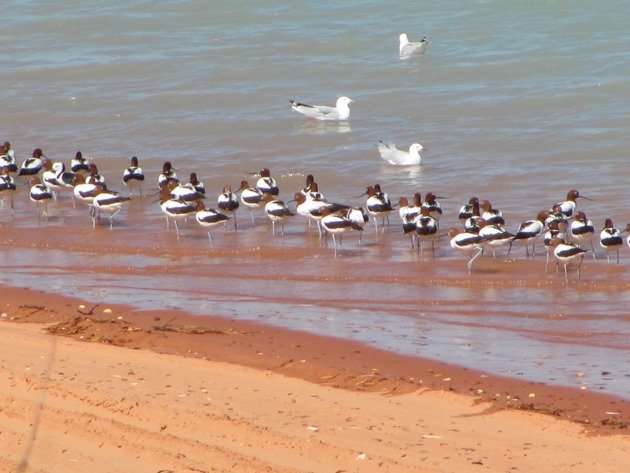
For regular readers of this website you may well think that you have seen that title before! Well, almost! Last time it was Banded Stilt and Red-necked Avocets abound and it was in quite a different environment! The weather itself was completely different and it was thousands of miles away to the south of Melbourne in Victoria. Now we are experiencing our cooler weather in Broome, with daytime temperatures still around 32c and so there is no need to carry a thermos flask like on the last occasion I saw Red-necked Avocets! Red-necked Avocets wander this vast continent and very little is known about their movements, but what we do know is that they follow water. In fact they do not come to Broome’s Roebuck Bay every year in large numbers and their arrival depends on the rain events inland in the previous months. It is not dissimilar to the arrival of Budgerigars in some years and not others. Having seen good numbers of Budgerigars and Cockatiels recently it was of no surprise to us to find that Red-necked Avocets had returned to Roebuck bay in good numbers recently. Low tides are great for exploring the reef around Broome, but the best time to observe the shorebirds in Roebuck Bay is around the high tide. On very high tides the other remaining migratory shorebirds tend to fly out behind the mangroves, but the Red-necked Avocets and Black-winged Stilt tend to find one of the wider beaches. The Red-necked Avocet and Black-winged Stilt are a lot more comfortable wading through high tide than other shorebirds and have a beach close to Crab Creek that they often roost at.
Red-necked Avocet, Black-winged Stilt and Silver Gulls
The flock was spread thinly along the beach when we visited and there were 79 Red-necked Avocet among the 500 plus Black-winged Stilt. The dull legs of the Red-necked Avocet stand out among the bright pink legs of the Black-winged Stilt. There are two Black-winged Stilt in the following photo with the Silver Gull desperate to “photo bomb” the shot! I hope you can see them!
Red-necked Avocet, Black-winged Stilt and a Silver Gull
The following photos show more of a mix of the two species and the Red-necked Avocet are more inclined to wade during the high tide. The sand can be hot at any time of year, so keeping on wet sand or wading is a sensible choice.
Red-necked Avocet, Black-winged Stilt and Silver Gulls
There were some smaller groups that were only Red-necked Avocet and you will note the heavily curved bill. It is very flexible for foraging for food and the male birds have a slightly more upturned bill.
Red-necked Avocet
The Red-necked Avocet and Black-winged Stilt were accompanied by Silver Gulls and there are also Gull-billed Terns of the race Macro tarsus currently present in Roebuck Bay.
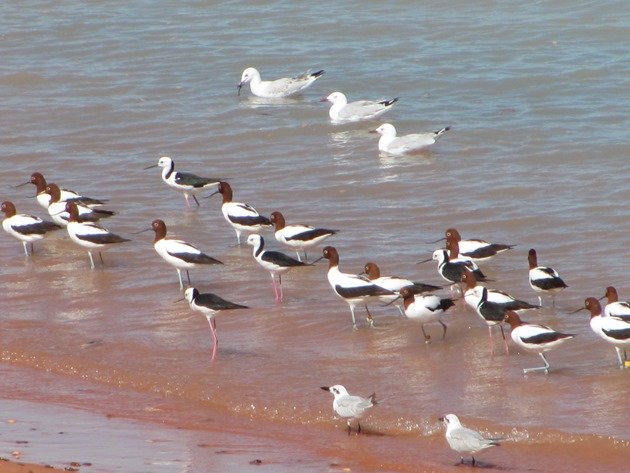
Red-necked Avocet, Black-winged Stilt, Silver Gulls and Gull-billed Terns
Further along the beach towards Crab Creek the flock was more predominately Black-winged Stilt and a lone Great Egret was present for some time. The flock of birds had positioned themselves some distance from the fisherman and so the dunes were not too high. There are cliffs along this beach and the shorebirds need to be aware of predators that frequent the area. There are good numbers of Black Kite and Whistling Kite at this time of year and the shorebirds are cautious of their presence. Their position enabled them to keep an eye on a larger area around themselves.
Black-winged Stilt flock near Crab Creek
It is always intriguing to wonder where all of these birds go when they are not in Broome or surrounds. They breed mostly in the south of Australia and then wander far and wide. They can be found in the “middle of nowhere” and often show up at Poo Ponds (waste water treatment plants) in remote locations.


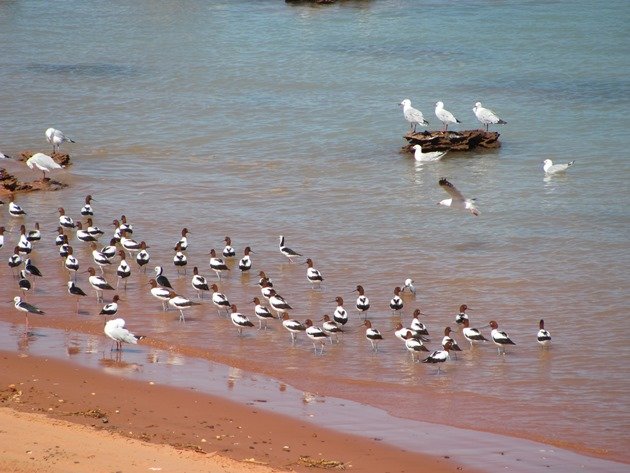
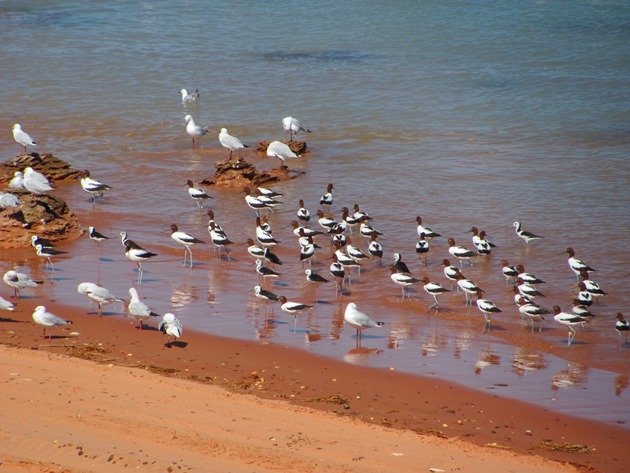
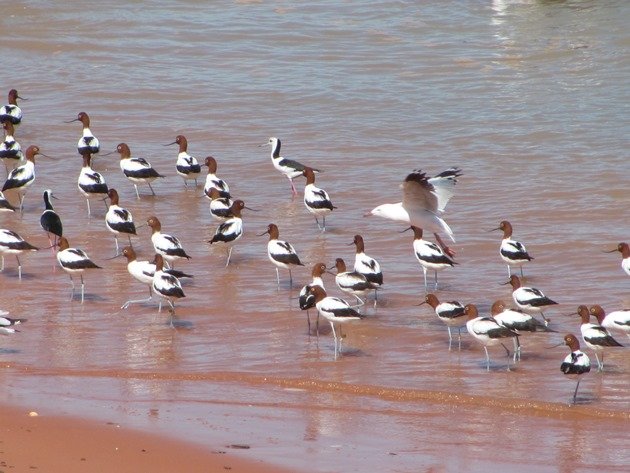
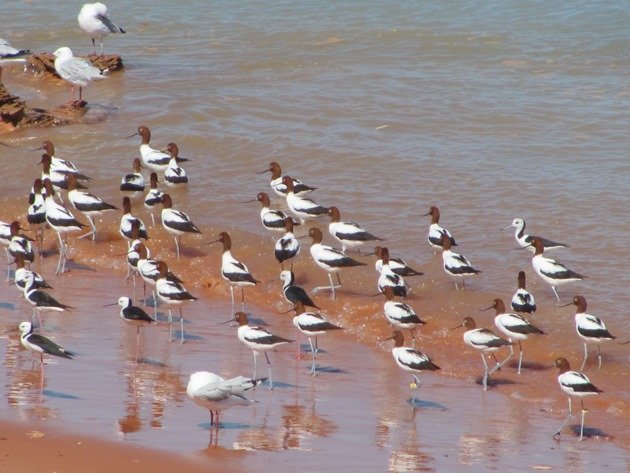
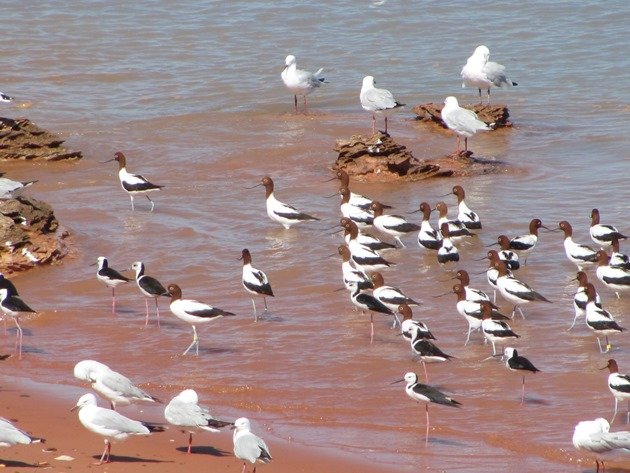
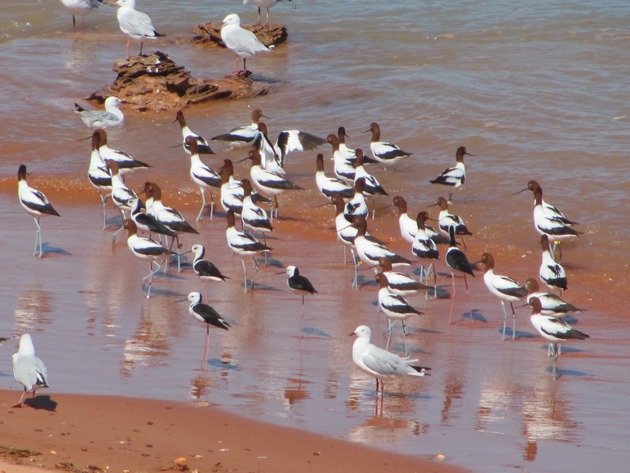
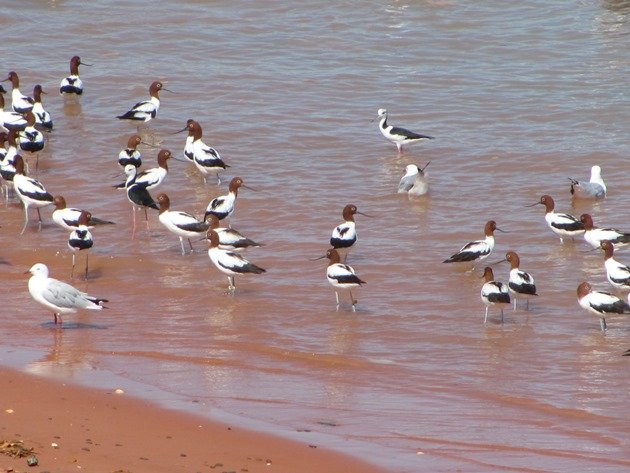
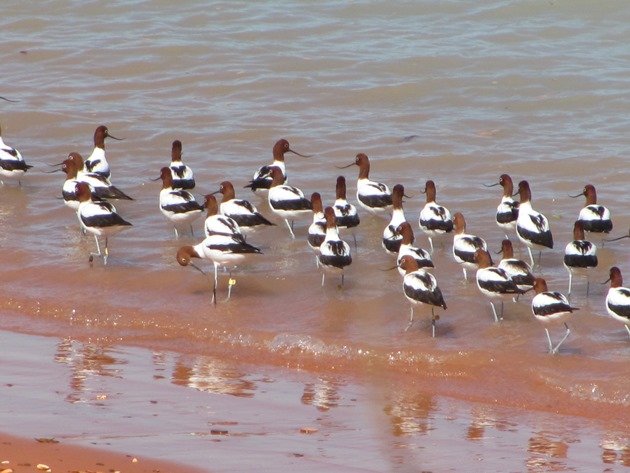
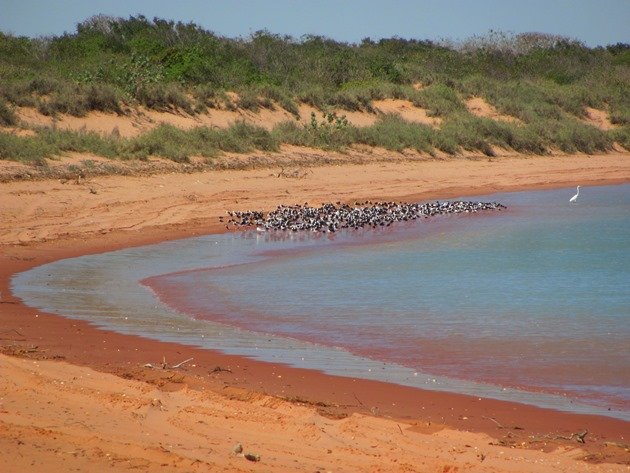
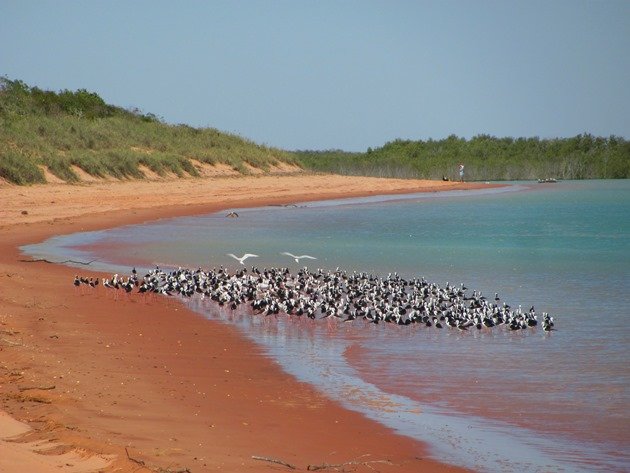











Leave a Comment